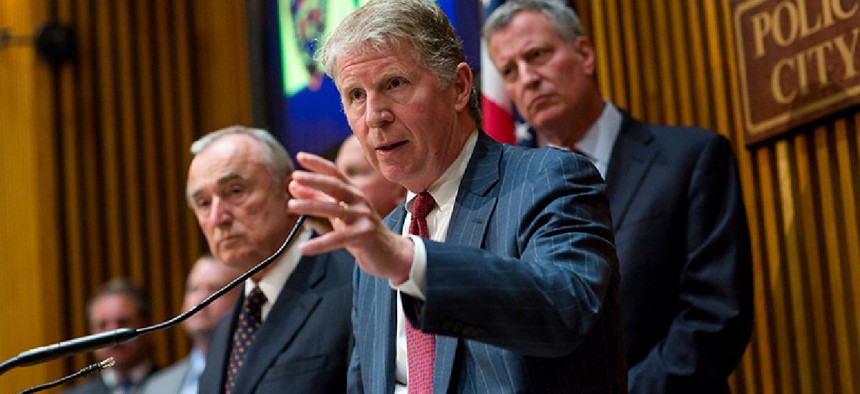Last week, Manhattan District Attorney Cy Vance announced a new slate of reforms aimed at avoiding criminal prosecution for approximately 20,000 non-violent misdemeanor cases per year. Going forward, individuals arrested for jumping the subway turnstile and minor drug possession in Manhattan will be held accountable through engagement in social services rather than conventional prosecution.
Vance’s decision is effectively an effort to remake misdemeanor justice in New York City, and its importance should not be underestimated. While much of the media coverage of crime focuses on felony offenses, the reality is that the vast majority of criminal cases are misdemeanors –approaching 80 percent in the state court system.
Most people charged with misdemeanors are not criminal masterminds. More often, they are individuals with complicated lives, including histories of trauma. Our agency conducted a survey with roughly 1,000 misdemeanor-level defendants in New York City and found that nearly one in two reported using drugs daily; one in four reported having experienced physical, emotional or sexual abuse; and nearly 20 percent reported having attempted suicide.
RELATED: POST Act a chance for de Blasio to act on anti-Trump rhetoric
For many observers of the United States criminal justice system, the term “misdemeanor justice” has long been something of an oxymoron. Recent scholarship on misdemeanor crime has documented over-enforcement in poor communities of color, a watered-down version of due process of law and the overuse of incarceration, among other problems.
In recent years, New York City has been ground zero for many of these issues, with a particular focus on the merits of “broken windows” policing. Researchers at John Jay College of Criminal Justice have documented a sharp increase in the number and rate of misdemeanor arrests from 1980 to 2013 – and the disproportionate impact this has had on young men of color. Beyond the numbers, the harms associated with low-level law enforcement were brought into stark relief with the death of Eric Garner in July 2014.
But there is a flip side to this story. Anyone who has spent time going to community meetings in New York City can attest that local residents often demand more aggressive misdemeanor enforcement from police. More than six out of ten New Yorkers want police to enforce quality-of-life offenses in their neighborhood, according to a 2015 Quinnipiac University poll.
How do we reconcile these two competing impulses – the call for more low-level enforcement with a desire to reduce the impact of the criminal justice system, particularly on communities of color?
Thanks to the concerted efforts of numerous advocacy groups, we have become more sophisticated in recent years about the potential collateral consequences of misdemeanor enforcement. Over the long haul, a misdemeanor conviction can hamper a person’s ability to find employment, housing, and other life essentials. What we need is a system that offers a measure of accountability for low-level offending while avoiding the use of jail and, as much as possible, the harms of further system involvement.
RELATED: Glenn Martin on what to do with Rikers
New York City is evolving in this direction. In addition to Vance’s announcement, recent months have seen a number of important developments. The City Council has moved a number of minor offenses from criminal court to civil court. The Mayor’s Office of Criminal Justice has invested in a supervised release program to ensure that thousands of New Yorkers charged with minor offenses avoid jail time while their cases are pending. The court system has supported the creation of community-based courts that seek to reduce the use of jail and fines as a response to misdemeanor crime. And the mayor has announced that he intends to close Rikers Island, one of the most notorious jail complexes in the country.
New York City has become a national leader in rethinking misdemeanor justice, but it is hardly alone in this effort. Through the MacArthur Foundation’s Safety and Justice Challenge, dozens of cities across the country are reengineering their approaches to misdemeanor-level cases. In South Dakota, the Rapid City Police Department is now citing and releasing people charged with shoplifting rather than holding them in custody. Spokane, Washington is working to divert misdemeanor-level defendants struggling with mental illness to community-based treatment services.
These are just a few examples of the change that is currently taking place across the country. Like New York, these cities are finding that broken windows can become well-marked exits out of the criminal justice system.
Greg Berman is the director of the Center for Court Innovation. Julian Adler is the Center’s director of research-practice strategies.


